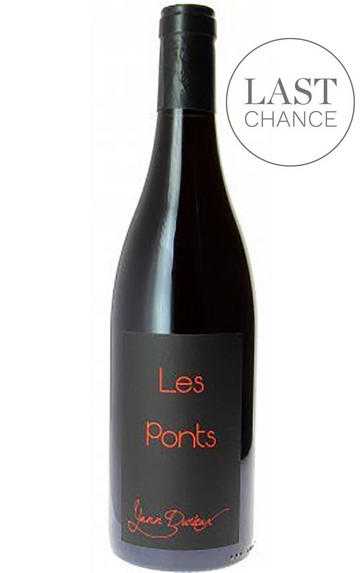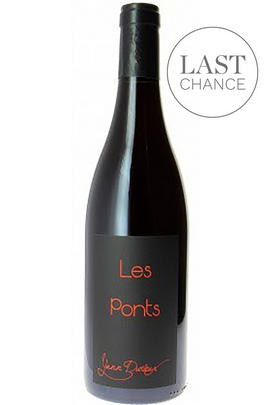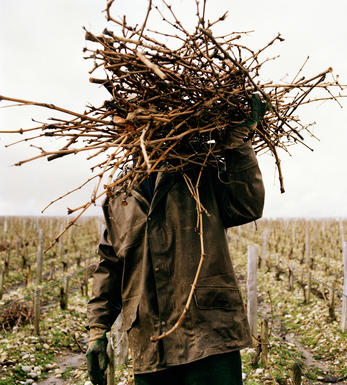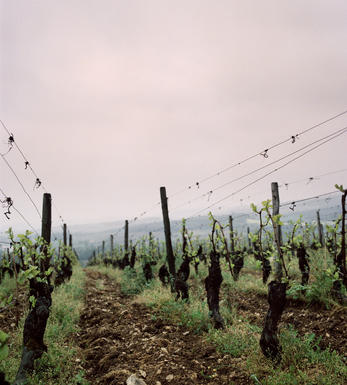
2015 Yann Durieux, Recrue des Sens, Les Ponts Rouge, Vin de France

About this WINE

Yann Durieux
Yann Durieux is a remarkably talented and passionate young winemaker making waves in the Burgundy wine scene. Hailing from a family of winemakers in Nuits-Saint-Georges, Yann’s exposure to the world of viticulture began at a remarkably young age. At just 13 years old, he already vinified his first vintage solo, setting the stage for his future in winemaking.
In 1999, Yann had a life-changing encounter with Henry-Frederich Roch, which profoundly influenced his winemaking philosophy and deepened his love for the concept of terroir. Subsequently, he spent a decade working with Domaine des Vignes du Maynes before joining Domaine du Prieure Roch (‘DPR’) in 2007. At DPR, he not only contributed to cellar operations but was entrusted with overseeing their esteemed parcel of Clos-de-Beze. This responsibility was a testament to his exceptional understanding of biodynamic viticulture and profound appreciation for terroir.
In 2010, Yann decided to pursue his dream of reclaiming his family’s lost vineyards in the Hautes-Côtes-de Nuits, and thus, he founded his Domaine, ‘Recrue des Sens.’ For the initial three vintages, Yann utilised the cellars of DPR before finding a vigneron’s house and cellar in Villiers-la-Faye to establish his winemaking base.
Nestled in the Hautes-Côtes-de Nuits, with Domaine de la Romanée-Conti (DRC) as its neighbour, Yann’s vineyards lie in magical terroir. With a profound connection to the land and a family legacy that stretches back through generations of winemakers, Yann brings a deep understanding and love for the region to his winemaking craft.

Bourgogne Rouge
Bourgogne Rouge is the term used to apply to red wines from Burgundy that fall under the generic Bourgogne AOC, which can be produced by over 350 individual villages across the region. As with Bourgogne Blanc and Bourgogne Rosé, this is a very general appellation and thus is hard to pinpoint any specific characteristics of the wine as a whole, due to the huge variety of wines produced.
Around 4,600 acres of land across Burgundy are used to produce Bourgogne Rouge, which is around twice as much as is dedicated towards the production of generic whites.
Pinot Noir is the primary grape used in Bourgogne Rouge production, although Chardonnay, Pinot Blanc, Pinot Gris and in Yonne, César grapes are all also permitted to make up the rest of the wine. These wines tend to be focused and acidic, with the fruit less cloying than in some New World wines also made from Pinot Noir, and they develop more floral notes as they age.
Although an entry-level wine, some Bourgogne Rouges can be exquisite depending on the area and producer, and yet at a very affordable price.

Pinot Noir
Pinot Noir is probably the most frustrating, and at times infuriating, wine grape in the world. However when it is successful, it can produce some of the most sublime wines known to man. This thin-skinned grape which grows in small, tight bunches performs well on well-drained, deepish limestone based subsoils as are found on Burgundy's Côte d'Or.
Pinot Noir is more susceptible than other varieties to over cropping - concentration and varietal character disappear rapidly if yields are excessive and yields as little as 25hl/ha are the norm for some climats of the Côte d`Or.
Because of the thinness of the skins, Pinot Noir wines are lighter in colour, body and tannins. However the best wines have grip, complexity and an intensity of fruit seldom found in wine from other grapes. Young Pinot Noir can smell almost sweet, redolent with freshly crushed raspberries, cherries and redcurrants. When mature, the best wines develop a sensuous, silky mouth feel with the fruit flavours deepening and gamey "sous-bois" nuances emerging.
The best examples are still found in Burgundy, although Pinot Noir`s key role in Champagne should not be forgotten. It is grown throughout the world with notable success in the Carneros and Russian River Valley districts of California, and the Martinborough and Central Otago regions of New Zealand.


Buying options
Add to wishlist
wine at a glance
Delivery and quality guarantee